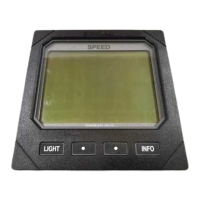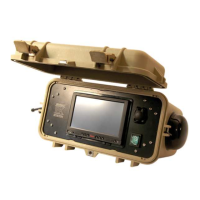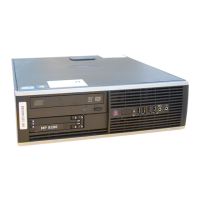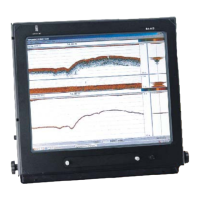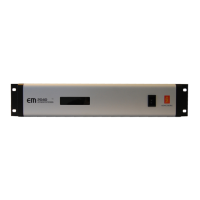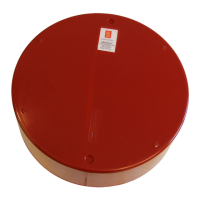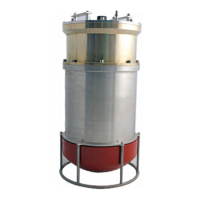Page 21Page 20
5.4 NMEA Sentences Received
The NMEA0183 information required for full functionality whilst in NavLock is as follows -
Cross track error
Bearing to destination waypoint
Arrival at waypoint indication
Magnetic Variation
This information is extracted from the following NMEA0183 sentences -
NOTE - The Cross Track Error (XTE) information has a maximum value of 1.21 Nautical Miles. If
the XTE exceeds this while using NavLock, the Wheelpilot will sound an alarm, exit NavLock
Mode and return to Compass Auto Mode.
The WP30 also extracts the apparent wind angle from the following NMEA0183 sentences -
VWR Apparent Wind Speed & Angle
MWV Wind Speed & Angle
XTE Cross Track Error and Arrival At Waypoint
BWC Bearing To Destination Waypoint and Arrival At Waypoint (Great Circle)
BWR Bearing To Destination Waypoint and Arrival At Waypoint (Rhumb Line)
APA Cross Track Error, Bearing To Destination Waypoint and Arrival At Waypoint
APB Cross Track Error, Bearing To Destination Waypoint and Arrival At Waypoint
RMA Speed Over Ground (SOG) & Magnetic Variation
RMB Cross Track Error, Bearing To Destination Waypoint and Arrival At Waypoint
RMC Speed Over Ground (SOG) & Magnetic Variation
6 Appendix
6.1 Advice On Operation
The Simrad Wheelpilot when used correctly can maintain as good a course, on most points of sail
as a skilled helmsman, with the advantage that they never lose concentration where a human may
begin to show lapses of concentration after as little as ten minutes.
There are certain circumstances however, where a human pilot has the advantage in being able to
anticipate events which no autopilot can sense, typically in a heavy following sea. The following
advice should improve efficiency when sailing using Wheelpilot:
1. When sailing close to the wind, it is easy to forget to trim the mainsail, allowing excessive weath-
er helm to build up. Where a human helmsman would quickly complain, the autopilot will strug-
gle on, and the boat will be sailed less efficiently. Whereas a human normally likes to feel some
weather helm, this is not necessary for the functioning of the Wheelpilot. Power consumption,
wear and drag will be greatly reduced if the mainsail is freed or reefed a little sooner than normal
when sailing manually.
2. It is also advisable when sailing close hauled to set a course a few degrees free of that normally
sailed under manual control, to avoid luffing into the wind.
3. When running dead downwind, a human pilot can see visual signs warning him if the boat is
about to gybe, which the Wheelpilot cannot sense. Therefore, when under autopilot it is advisable
not to sail as close to the gybe as you may do when sailing manually.
4. When broad reaching or running fast, particularly with quartering waves, a helmsman will nat-
urally apply periodic larger angles of helm than when beating or sailing slowly. This is the equiv-
alent of increasing rudder Gain, and it may be a good idea to adjust the Gain on the Wheelpilot.
Many people prefer to find a compromise setting which is used for all sailing, but with practice it
can be optimised for different conditions e.g. low for motoring in a calm sea or high for running
fast. If the Gain is set too low, the boat will yaw because insufficient rudder is applied in time; if
the gain is too high, the boat will continually overcorrect on each deviation, increasing power con-
sumption.
5. While the clutch is engaged, the wheel cannot be turned manually. In an emergency situation,
manual control can only be achieved by lifting the clutch lever. Do not attempt to force the wheel
while the clutch is engaged as you may damage the Wheelpilot or break the internal drive belt.
6. The Wheelpilot is a highly advanced piece of equipment - as such, it is a valuable aid to enjoy-
able sailing. However, it would be a mistake to become complacent. As with all electronic navi-
gational equipment, it is an aid to navigation and should not be used as a substitute for conven-
tional navigational practice. Remember - Maritime Law* requires that you keep a good look out
at all times.
*IMO International Regulations for Preventing Collisions at Sea, Part B Rule 5 (1972)
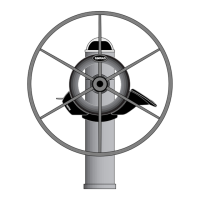
